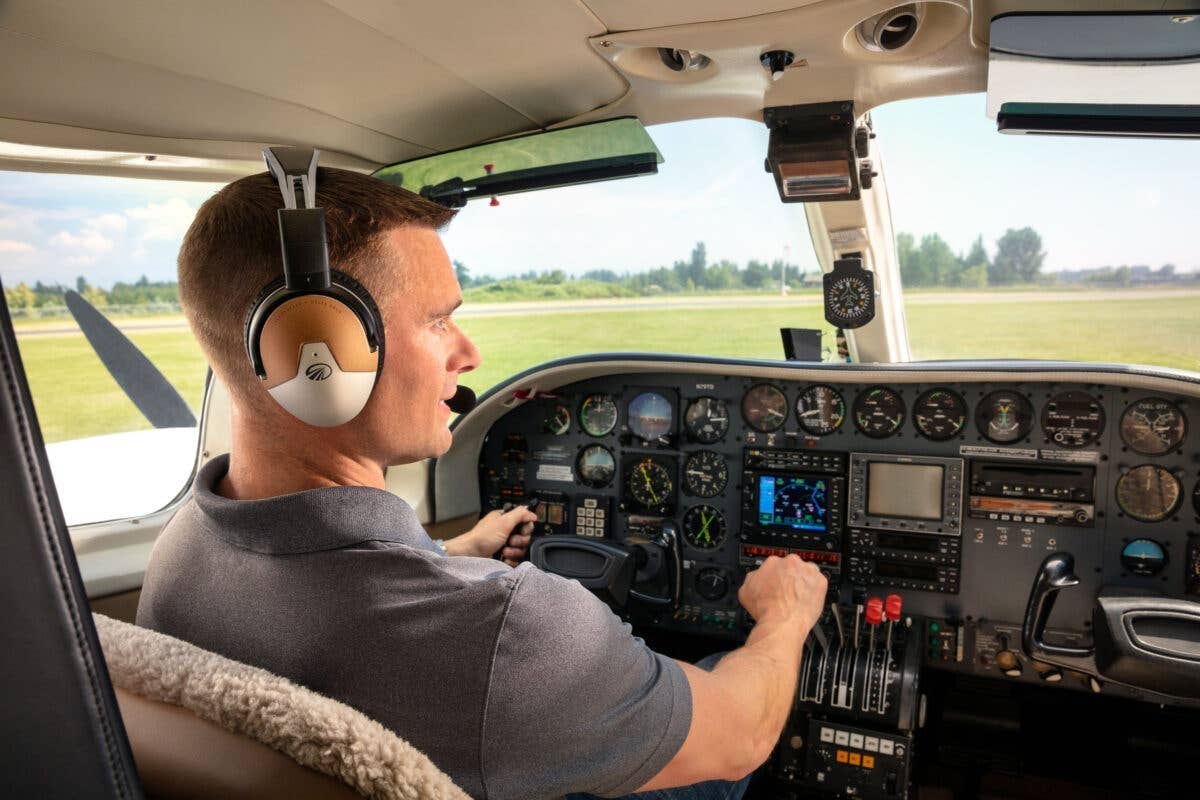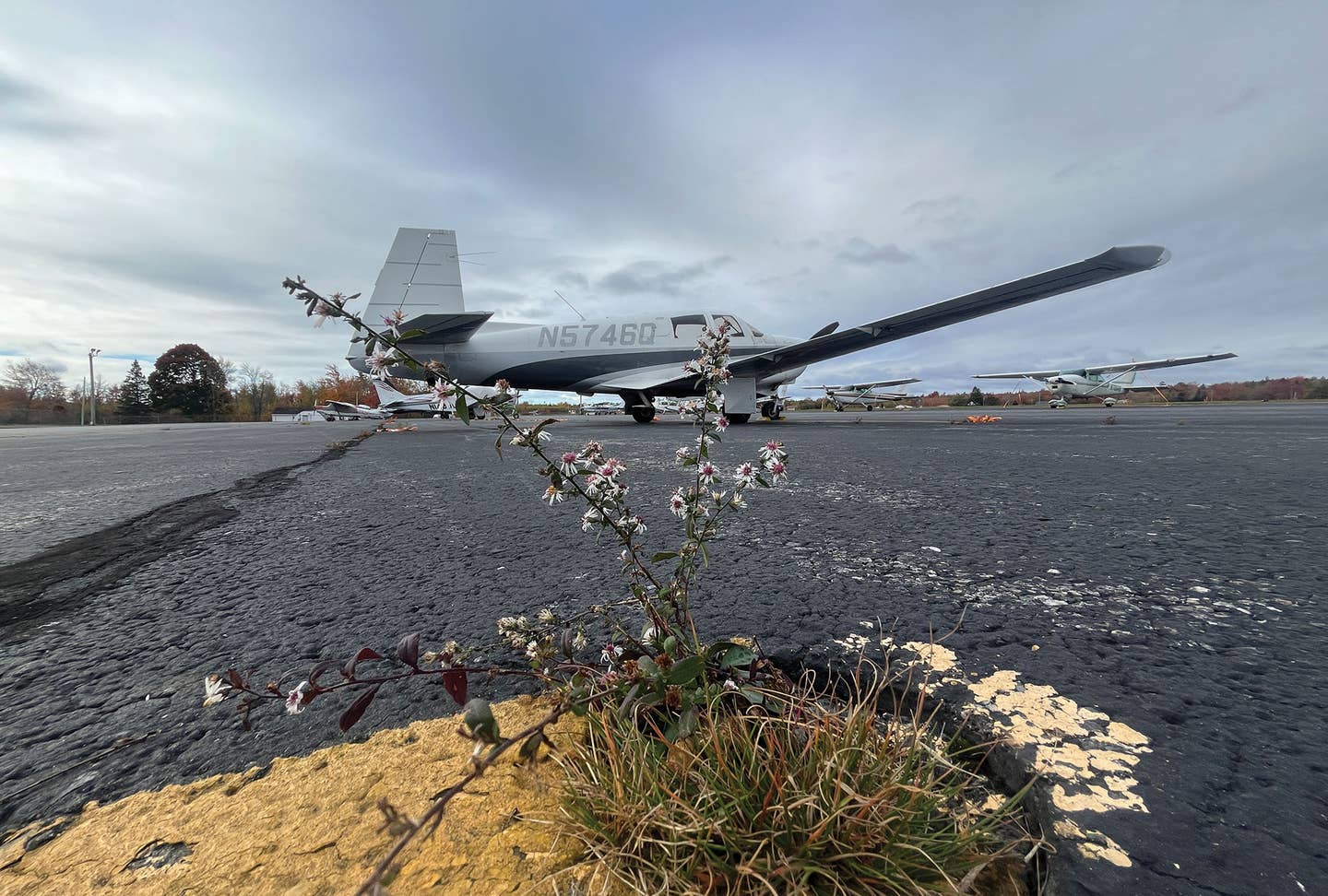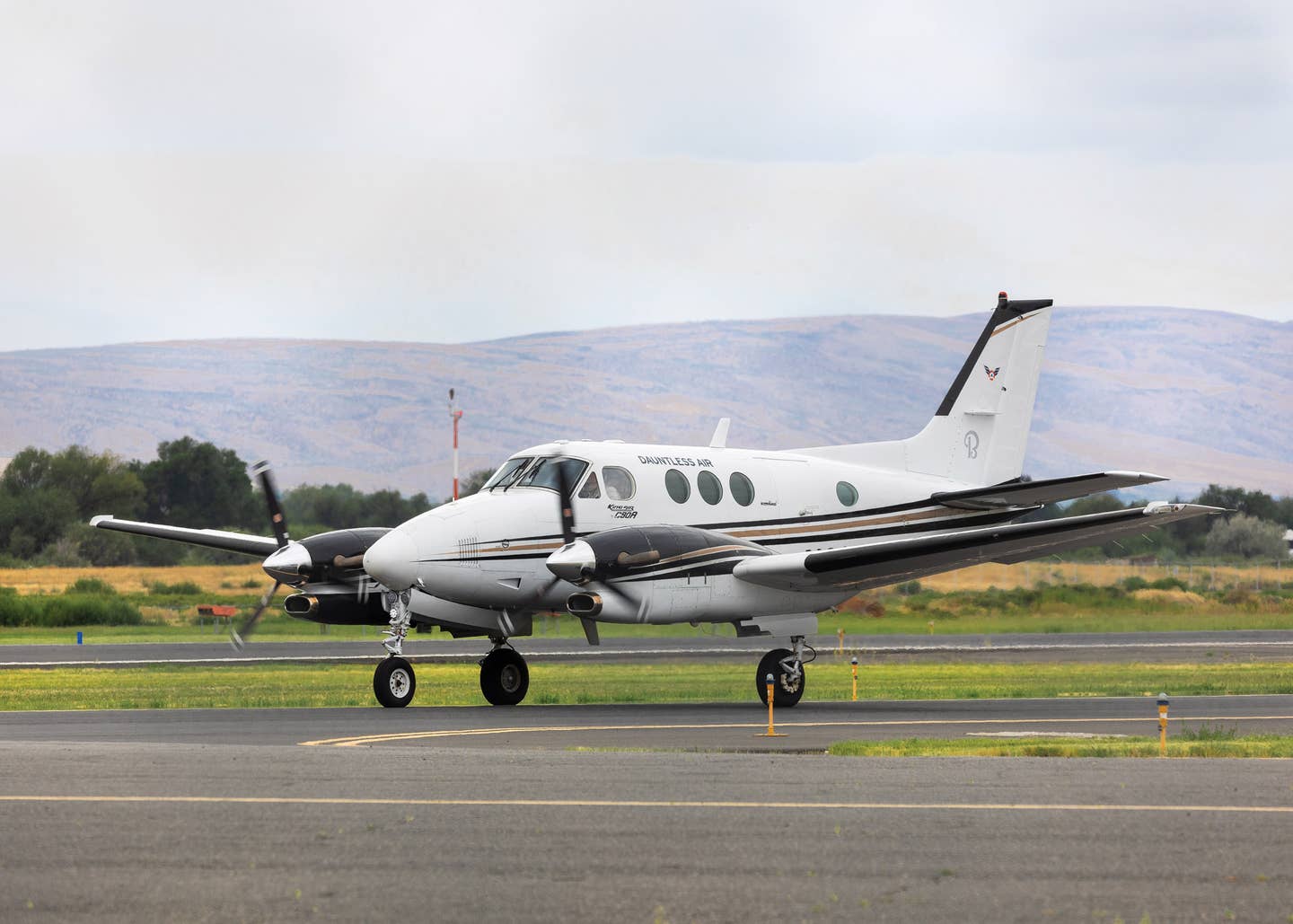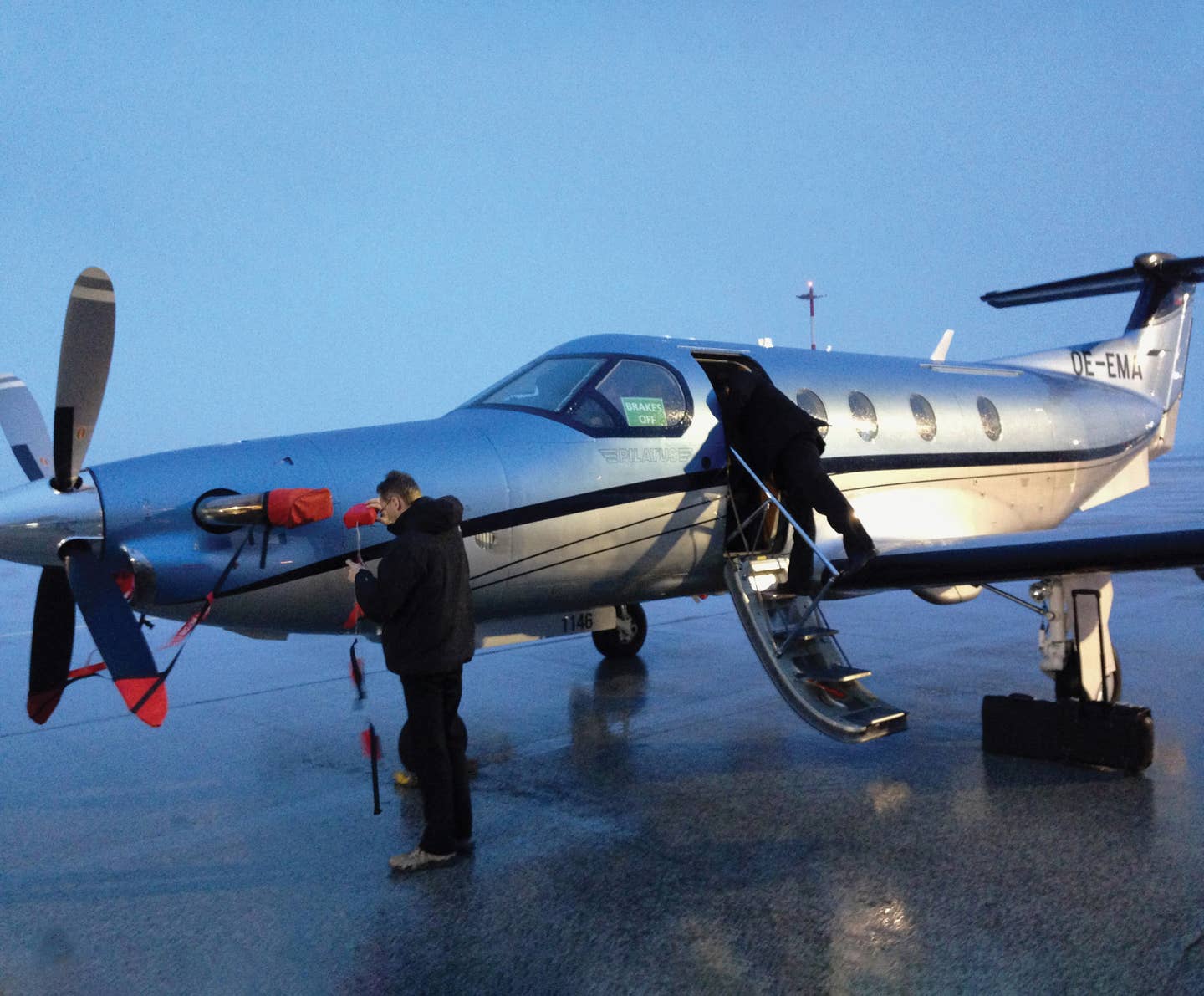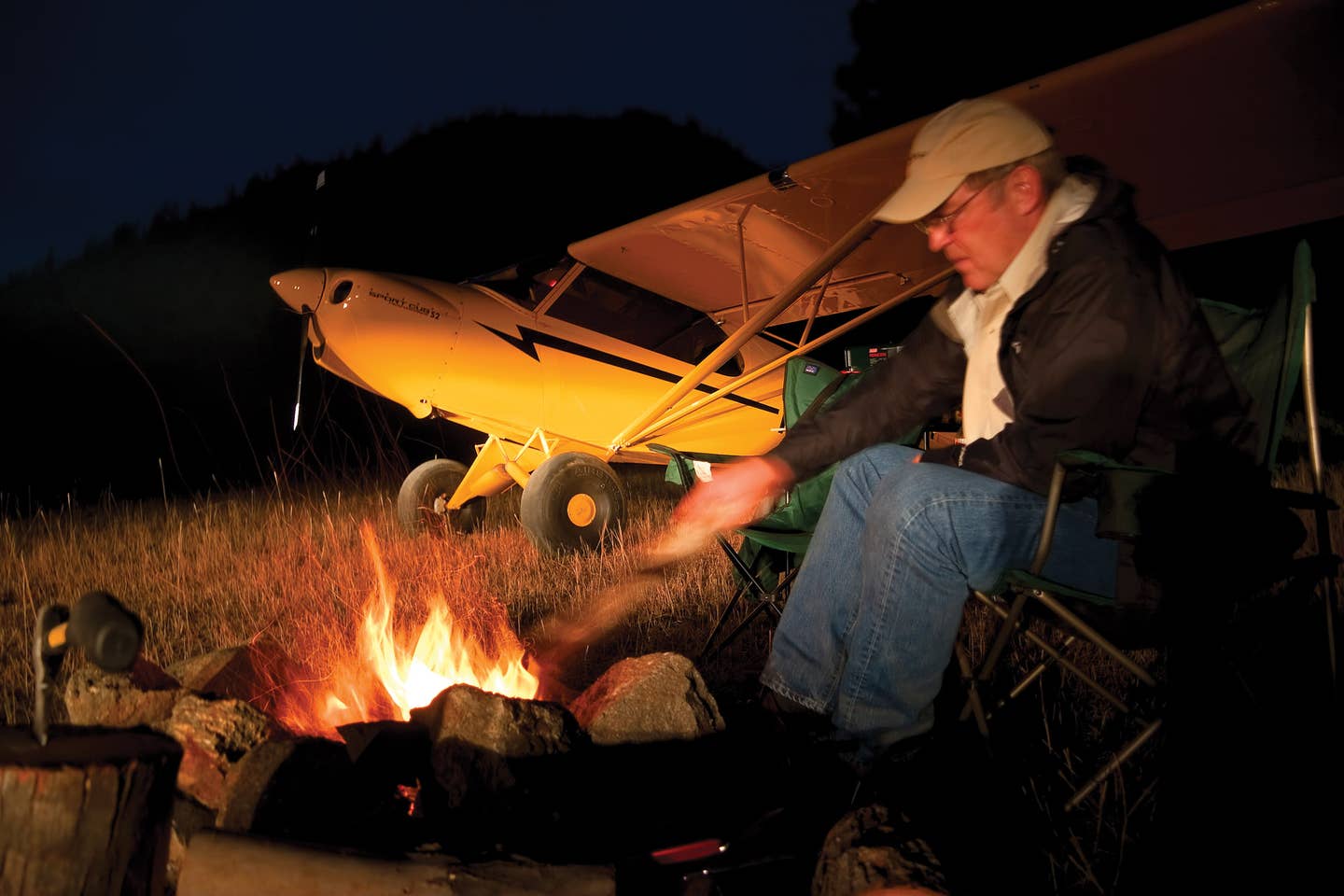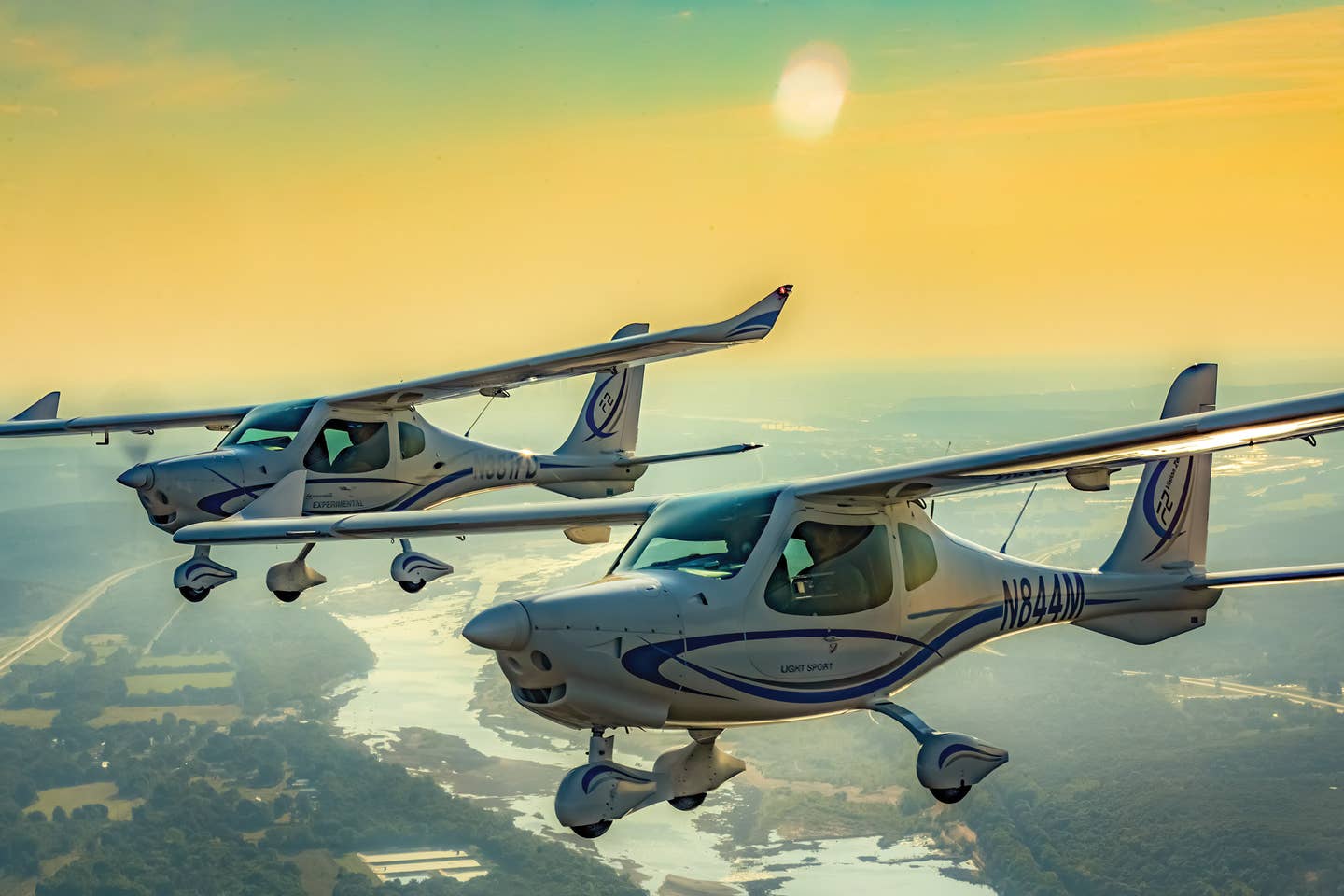Mooney Ovation Ultra
Why the fastest normally aspirated piston single in the skies is also the best non-turbo Mooney ever
We were getting a leisurely start to our Wednesday, as I trimmed up the plane and settled back in my seat, watching the surf-sandy central California coastline slide by to our right and the Channel Islands, hazy blue in the morning Pacific haze, 20 miles out across the sound, drift behind us on the left. It seemed fitting, as I ran through the cruise checklist, to dial up a Sirius XM channel, which, like many others that day, was featuring the music of the late, great California kid Tom Petty, who'd died just the day before. The song "Learning to Fly" came on. Perfect.
I was traveling with my new real-life and longtime Facebook friend Richard Simile, of Mooney, whose tough job it was to keep an eye on me while we went flying in the new, very fast piston single around early autumn California. For months I'd made no secret that I wanted to fly the Ovation, and to fly it early and often. I'm like that with most airplanes. And the fact that Mooney is in Kerrville, Texas, just a Skylane hop across hill country from my home in Austin, might make it seem as though that would have been easy. But when I finally got the chance to fly the plane, it wasn't in Texas at all but in southern California, where the newly certificated model was about to embark on a two-week sales tour to show prospects just what kind of plane it is. The sales trip made sense to me, because no one really knows what the Ovation Ultra is like because it's the very first one. It is in a very real sense a 197-knot unicorn.
It's understandable that some of you might be wondering what's so special about this particular Mooney, an airplane that, admittedly, has the same basic shape and function as just about every Mooney before it. The Ovation Ultra is shaped like a Mooney, which if you like Mooneys, and I do, is a good thing. And its mission is pretty much the same as those Mooneys that came before it, to go economically from distantly separated points on the map with great speed.
What is different is the way it accomplishes the mission.
For background, the Ovation is not a new plane. It's been around for 20 years now, the successor to the remarkably popular M20J, popularly known as the Mooney 201. The "201" nickname signifies how fast the plane is in mph, as determined, some say, by a slightly optimistic marketing department. Regardless of whether it'll hit 201 mph in straight and level flight or just come close, no one argues that the 201 is very fast on just 200 horsepower, a remarkable one-mile-per-hour per horsepower, a 1:1 ratio that set a standard for certificated light transportation planes.
When it was introduced in the early '90s, the Ovation was all about taking Mooney speed and adding lifting power and comfort, both of which it succeeded at doing by going with a substantially (13 inches) stretched fuselage, a more powerful, six-cylinder Continental IO-550 engine putting out 280 horsepower, and additional fuel capacity. Later, the Ovation got even more power, with an STC that allowed more operating horsepower out of the same fuel-injected IO-550 Continental engine, boosting it to 310-hp. This is the engine in the new Ovation, but the process, instead of being STCed by a third party, is now produced in-house by Mooney.
Ultra
The Ultra version, which earned FAA certification earlier this year, enjoys the same improvements as the company's Acclaim Ultra, which earned Plane & Pilot's 2017 Plane of the Year recognition for piston singles, announced in our November 2017 issue.
Whereas some variants of some airplanes are difficult to discern from their predecessors, figuring out which Mooneys are Ultras and which are not couldn't be easier. The Ultras have two doors, the first Mooneys to boast twin portals after many decades of everybody having to climb in on the right side of the airplane. The new arrangement, Richard told me, is hard for longtime Mooney pilots to get their head around. Richard, who has around 5,000 hours in Mooneys, including a couple that were his personal airplanes, described how even after having flown the two-door Ovation Ultra for around 25 hours, he still instinctively turns toward the right side to get out and wanders over to the co-pilot's side of the airplane to get in.
The need to break old habits notwithstanding, the way Mooney made a two-door airplane out of a single-holer was ingenious, and while it's easy to explain the process, it was anything but a cakewalk for Mooney to make it happen. It took the company more than two years to bring the plane to market.
With a couple of exceptions, early models that used wooden wing structures and fabric-covered flight controls, Mooneys have always been all-metal airplanes; until the Ultras, that is. As much as Mooney owners are a loyal and enthusiastic group, and they are, for decades they have made their wishes known. They wanted more room (especially in back), better visibility, and, oh yeah, a shoot-for-the-moon wish-list item, a pilot's side door.
The Ultra answered all of those questions by replacing the forward fuselage metal skin with an all-new composite structure, with integrated doors on each side. This approach allowed Mooney to cut the weight of the exterior skin to achieve a weight savings it desperately needed in order to add the second door. The need to cut weight wasn't because the doors are particularly heavy. They aren't. They're each substantially lighter than the original right side built-up sheet metal door, so when you add it all up, it's close to a wash over the single door of the non-Ultra Ovation.
But the overall weight savings was critical for a reason that makes sense to manufacturers but that most pilots don't ever think about---the structure under the wing walk, which has to be a lot beefier than a comparable non-weight bearing surface. If you think about it, it makes sense. The wing's surface needs to be not only strong for a flat surface load but for a concentrated load of a few hundred pounds focused in the space of one footprint. So all the weight saved with the composite skin is dedicated to the stronger wing root structure on the left side.
The composite fuselage also has the advantage of allowing completely redesigned doors and windows, two things that few Mooney owners ever specifically asked for but that will delight every one of them. The windows are larger, and a lot of that extra space is used to make them lower, so the view out the window is greatly enhanced. I'd go so far as to say it's a terrific sightseeing airplane for a low-winger. With the wing set back a bit in classic Mooney fashion and the side windows more spacious, the view down in front of the wing is quite nice.
The longer doors also make it a lot easier for the rear-seat passengers to get in. Just slide the seat forward, fold the seat back forward, and there's space galore for getting into and back out of the plane. The combination of the longer and lower windows also give the back seating area a feeling of roominess and openness that is unprecedented in the type.
The panel is also completely redesigned over the already very nice G1000 panel in the previous Mooneys. The Garmin G1000 NXi suite in the Ovation Ultra (and in the Acclaim Ultra, too) is custom designed to fit the space and the mission of the Ovation. For the first time in Mooneys, there's a dedicated keypad for entering or modifying flight plans, punching in comm frequencies or inputting a new transponder code, among many other functions. The displays, as with all NXi G1000 suites, look great, but the magic behind them is in the new graphic style of the user interface and the blazing speed of the processors. Panning and zooming are super fast!no more waiting for the system to catch up with your requests. Ask for a new view and you shall receive it, like right now. It's a terrific update to G1000, as I've written before, and the avionics features are top-drawer stuff, competitive with any other premium piston single and even a few turboprop singles, for that matter.
As in the Acclaim Ultra, you can opt for TKS known-ice protection, air conditioning or neither, but not both. The plane I flew was the naked variety. And though it was a warm day for our California adventure, we never felt overheated. For taxi, you can crack the doors, and once you're airborne, the fresh air system, the best in any transportation piston single I've flown, is powerful, with lots of pressure and multiple eyeball vents coming at you with cool air from every possible direction.
Even the seats are better than ever, with a longer seating surface, betterpadding and improved adjustability, including lumbar support that works great. The bottom of the panel is still pretty low, so there's that feeling that your legs are encased beneath the panel, which longtime Mooney pilots probably won't even notice. Compared with the Cirrus SR22 or Cessna TTx, it's a more sports car-like feel, compared to the competitors' luxury sedan ride. But once you're seated in it, the controls fall to hand very nicely, and everything you need to do while you're flying you can pretty much do without reaching or readjusting. Even the buttons on the yoke grip are smartly placed, with the speed brakes, for example, being along the side of the surface, so you can't mistake it for any other button there. The ergonomics are outstanding.
My introduction to the Ovation Ultra was on the early-evening photo shoot we did for this story. I was flying in the co-pilot's seat of Scott Slocum's A-36 Bonanza. Scott was in the back, the big side door off, shooting the Ovation Ultra, and Jason Somes, a corporate pilot by day and warbird pilot in his off time, was to my left doing the flying. Steve McCartney, who, like Jason, flies Gulfstreams for a living and WWII planes for fun, was flying the Ovation, and with an hour of sunlight left in the day, we'd departed Camarillo, a popular GA airport near the coast in Southern California. We flew low along the coast, in tight formation, getting some beautiful shots, keeping it going until we'd run out of light.
So when the next day dawned just as golden, I was stoked to fly the new Mooney, in part because I'd developed a bit of a crush on the plane after staring at it in the California light for a couple of hours the night before. It was a real beauty.
Richard wanted me to get a good feeling for what the airplane could do when it stretched its legs a little, which, I have to admit, we only simulated. With 100 gallons of fuel and the power pulled back, the Ovation Ultra can, says Richard, fly from LA to Atlanta with reserves, a leg much longer than I'd care to do, especially with the power pulled back, but, impressive, yes. Our plan, to head up to Monterey for lunch, was far less impressive but probably a lot more fun.
The flight was, as is often the case with light GA flights, a remarkable example of the efficiency and ease of flying small planes for transportation. Our flight, from Camarillo (KCMA) to Monterey (KMRY), was one that would have been a long day's drive in a car. In the Mooney, it took us less than two hours, and we arrived in plenty of time for lunch despite a very leisurely departure schedule that included a stop at Starbucks and a lengthy preflight walkaround.
We decided to go up VFR with flight following and to manually avoid the restricted areas and MOAs around Vandenberg Air Force Base, an approach that would allow us to gab more about the airplane without undue interruption from the nice folks at LA Center.
Starting an IO-550, like the one in the Ovation Ultra, is easy when the engine is still cool. And, indeed, it turned over on the third blade. We taxied out for a takeoff conveniently to the north. After getting cleared by the tower for takeoff, I smoothly pushed the throttle forward and the airplane accelerated smartly. I found it easy to keep the Ovation on the centerline, and, on this mild morning, we had rotation speed very quickly. Upon positive rate, I retracted the gear and, a bit later, the flaps, and we headed up, doing a turning climb toward a big hole in the spotty marine layer above. It's business as usual at these coastal California airports.
We weren't full of fuel---you seldom need to fly around with all 100---and it was just me and Richard and my giant suitcase (necessary for the 10-day odyssey I was on). We were looking at 1200 fpm at 120 knots indicated, a climb airspeed well above best rate and way above best angle, but one that seemed ideal that day. The maneuvering gave me a chance to get a feel for the Mooney, which, as you might know, famously has push rod controls that give the pilot a very solid feel for the flight controls. It's not a sporty airplane, it's not particularly quick in roll or in pitch, for that matter, but it is just right, in my opinion, for an airplane meant to go places and fly approaches. I'm a fan of the way these airplanes feel to the hand.
We flew and I jotted notes and chatted with Richard about the plane and his experiences in it, but we did a lot of random chatting, too, along with a lot of sightseeing and iPhone picture snapping of the spectacular California coast, cold blue waters and rocky cliff shores interrupted by strips of bright sand and surf. And, yes, Florida-born, adopted California son Tom Petty played the background surf guitar-inspired music for the views. And, yes, Richard and I were both getting paid for this. Please don't mention it to our bosses. And the views were indeed greatly enhanced by the new window layout in the Ultra. I can't begin to tell you just how much more open the feel is. On the practical side, I came home with some amazing shots of the stunning landscape passing by below us as we flew.
As I noted previously, the Ovation Ultra is the updated version of the Ovation, the naturally aspirated IO-550-G powered model. So its happy place is down low, as opposed to its sibling Mooney, the Acclaim Ultra, which does its speedy thing---up to an advertised 242 knots true---in the teens and twenties. In the Ovation, a streamlined profile with a very small flat-plate signature (which seeks to represent the plane's overall drag coefficient into an imaginary single flat of material), you still get a lot of speed without the turbocharging. On a day when temperatures were well above standard and at a cruising altitude, 8,500 feet, well above the plane's optimal power-producing level, we still saw true airspeeds of better than 190 knots at around 70 percent power while burning 16 gph.
There are some downsides to the Mooney lineup. If you're a fan of whole-airplane chutes, forget about Brand M and go talk to Cirrus. And the Ovation lacks the mechanically simplified power controls of the Cirrus SR22 also, so power management isn't as easy as it could be or probably should be. And there's the gear. Unlike the Cirrus SR22 or Cessna TTx, both of which are fixed-gear speedsters, the Mooney Ovation is a retract, which many pilots, me included, are fine with, though there is some additional risk, and insurance premiums tend to be a bit higher, too. The payoff is a lot of additional speed. And retractable gear planes are just downright cool.
I don't fly Mooneys on a regular basis, so almost without fail when I fly one for a flight report like this, my first couple of landings in them are less than works of art. And my landing at Monterey, an aircraft carrier of a runway perched on a bluff with lots of terrain surrounding it and a predictably crummy ride on short final whenever the winds are blowing, was no exception. All those excuses made, my approach was great. It was the landing that wasn't. I was a little fast, which in Mooneys makes for predictably lousy landings, and I flared a little high, as Richard warned me I would given the new view of the Ultra series. I bounced it a bit but resisted the urge to over-control the plane and, hence, to get into a porpoise, and guided it back down for a relatively nice second try.
Then the weirdest thing happened. The seemingly baffled ground controller guided us confusingly to our spot on the near side of a pair of F22 Raptors---man, are they cool---that were running up, we assumed in anticipation of taxiing out and taking off, an assumption that proved incorrect. We shut down the IO-550, turned off the lights, unbuckled and climbed out, me out of the left side and Richard out of the right, only to have to wait 20 minutes to get an escort to the FBO while the F22s ran some diagnostic tests that apparently prevented people from walking in front of them. All was forgiven when, an hour later, we got our consolation prize, watching the stealthy, super maneuverable fighters take off on afterburner, wowing the small crowd of people who'd gathered for the event with their own private airshow.
Our next leg from Monterey was down to Santa Barbara, where I had to be the next day. The trip back down the coast was, if anything, even more spectacular than our journey up earlier in the day, and it underscored the remarkable capability that a near-200-knot airplane gives you. It was a lot of traveling at a leisurely pace, and we both felt as though we hadn't done any flying at all. The level of comfort is really remarkable.
Heading into Santa Barbara, the clouds were close to the ridge tops to the north, so we headed toward the beach and came up the freeway, which put us on a right base over the high terrain for 15 Right. Richard counseled me on the landing technique I should use, which involved a lot of nose up trim; in fact, pretty much all the nose up trim that we had and being patient as the energy dissipated. I floated a bit, but the touchdown was solid and I got on the brakes, and we made the turnoff to the FBO. These planes take some technique to land well, as do many planes, but once you get the hang of it, as I have in the past when I've had the chance to fly them regularly, it feels something like second nature.
I reluctantly said goodbye to Richard and headed to the rental car counter to make my way to my next flying adventure. As I drove into town to my AirBnB, I thought about how remarkable it is to be able to jaunt around a huge state like California like it's a little town, but that's what we'd done. Again, such a trip in a car would have been a multi-day affair, and good luck trying to pull it off on the airlines.
And as you know if you've flown Mooneys much, or a very few other really fast single-engine piston planes, that's just the beginning. The Ovation Ultra is a plane that might not be a bizjet, but it enables long-distance flying so efficiently that you'll never think of air transportation the same way again, as you piece together trips that previously seemed undoable.
With the Ovation Ultra, Mooney has done it again, taking an already-powerful and sleek platform and transforming it into the best-in-class, normally aspirated cross-country machine. Fast, easy on the eyes and efficient, the Mooney Ovation Ultra is also the most comfortable Mooney ever and the most technologically advanced, too. With Mooney getting back into the game after successfully earning certification for these two new airplanes, it might take a while for it to build up sales momentum. But based on what I experienced in my flight in the brand new Ovation Ultra, all it will take is one flight to understand just how much better a plane the Ultra is, which is saying a lot, because its predecessor is an impressive performer, too.
The Mooney Ovation Ultra we flew for this report is the 2017 certification model. It features the Garmin G1000 NXi with integral keypad, GFC700 digital autopilot, dual solid-state attitude and air data sensors, traffic and terrain awareness utilities, Garmin ESP envelope protection, Garmin ADS-B In and Out, Sirius XM weather and entertainment, and more.
Price as flown: $689,000
2017 Mooney Ovation Ultra Specifications
Want more first-hand accounts of flight experiences in interesting, new, and/or rare aircraft?Check out our Pilot Reports archive.

Subscribe to Our Newsletter
Get the latest Plane & Pilot Magazine stories delivered directly to your inbox

